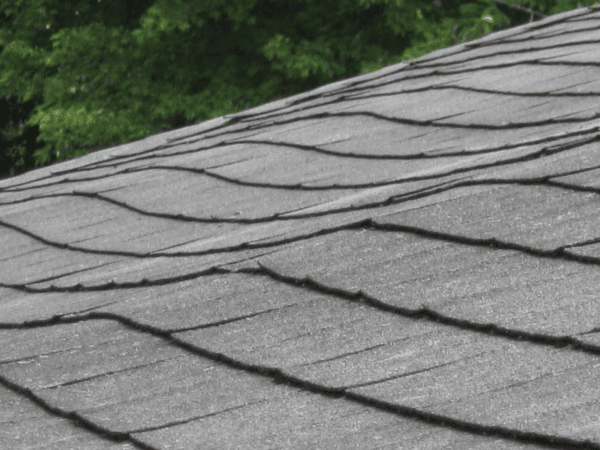
Have you ever looked up at your roof and wondered if it’s looking a little… off? Roof sag is a common issue, especially in older homes, and a sagging roof typically appears as a dip, bow, or wave. Roof sag may affect a single section or the entire roof and it often develops gradually, making it easy to overlook in the early stages.
Even a slight dip or wave in the roofline can worsen over time, leading to more costly repairs — and pose greater risks to your home’s structure and the safety of those inside. Once sagging reaches about 0.25 inches per ten feet (for shingle roofs), it’s generally considered a structural concern.
At Jack C. Wilson Roofing Co., we take pride in our legacy as a family-owned business serving Jacksonville for over 80 years. Our commitment to quality, integrity, and long-lasting roofing solutions has made us a trusted name in the community. Whether you’re dealing with roof damage, sagging, or simply need an inspection, our experienced team is here to help.
What Causes a Sagging Roof?
A sagging roof is more than just a cosmetic issue — it’s often a sign of deeper structural problems. Several factors can contribute to roof sag, ranging from natural aging to poor construction. Common causes include:
Water Damage
One of the most common causes of roof sag is water intrusion. When water fails to drain properly, it can seep into the roof decking and cause wood rot or mold. Over time, this weakens the structural integrity of your roof. Leaks, clogged gutters, or poorly installed flashing can all contribute to moisture build-up, eventually leading to sagging areas.
Excess Weight from Snow or Debris
Roofs are designed to handle a certain amount of weight, but excessive loads from heavy snow, ice, or even debris can stress the supporting structure. If your area experiences frequent snowstorms or ice accumulation, it’s important to safely remove the buildup.
Improper Structural Materials and Installation
Sometimes, the issue stems from the materials used during construction. Undersized rafters or insufficient bracing can all compromise the roof’s load-bearing ability. Improper installation can also cause major issues down the line, since the durability of your roof’s build may be affected.
Aging Roof Structure
All roofs have a lifespan. As they age, materials naturally begin to deteriorate, especially under prolonged exposure to weather and temperature changes. Even well-maintained roofs will eventually show signs of wear, including sagging. If your roof is over 20–30 years old and beginning to dip or bow, it may be time to consider a full replacement rather than a temporary fix.
How to Determine If Your Roof Is Sagging
Roof sagging isn’t always obvious, especially in the early stages. But catching it early can save you from more serious (and costly) structural issues down the line. A visual inspection from both outside and inside your home can help you spot potential signs of trouble.
Inspect your home’s exterior
Start by stepping back and observing your roofline from a distance. A healthy roof should appear straight and even. If you notice dips, curves, or a wavy appearance, that may indicate sagging.
You can also use a long level, straight board, or broomstick along the ridgeline to check for misalignment. Keep an eye on your gutters, too — if they’re pulling away from the roof or appear uneven, it could be a sign that the underlying structure is starting to shift.
Inspect your home’s interior
Inside your home, look for cracks in the ceilings or walls, which can result from the extra pressure of a sagging roof on your home’s frame. In the attic or crawl space, inspect the underside of the roof for sagging rafters, uneven decking, or visible cracks in the wood.
If anything looks off or you’re unsure, it’s best to call a professional. A licensed roofing contractor can assess the severity of the sag, determine the underlying cause, and recommend the most effective solution, whether it’s reinforcement, repairs, or a full replacement.
How to Prevent Roof Sag
Most roof sagging can be avoided with proper care, regular maintenance, and timely attention. Prevention is almost always more effective and less costly than repairs after damage occurs.
Keeping your gutters clear and avoiding excess roof weight are two essential steps. Gutters help direct water away from your roof and when they’re clogged or damaged, water can pool and lead to rot and weakening. Likewise, heavy snow, debris, or added equipment like HVAC units can strain the roof’s structure.
Regular professional inspections, along with seasonal upkeep like debris removal and drainage checks, go a long way in preserving your roof’s integrity and catching signs of sagging early.
How Is a Sagging Roof Fixed?
The first step in repairing a sagging roof is identifying the root cause of the damage. In many cases, this involves reinforcing or replacing weakened rafters or trusses — critical structural components that support the entire roofing system.
Moisture is a common culprit. Leaks or poor attic ventilation can lead to condensation, causing the roof decking to swell, warp, or rot over time. Simply replacing damaged materials isn’t enough. If the underlying issue isn’t resolved, the problem will return. For lasting results, both the structural damage and its source must be addressed to restore the roof’s integrity and prevent future sagging.
Concerned About a Sagging Roof? Let’s Take a Closer Look
If you’ve noticed dips, curves, or an uneven roofline, it might be more than just a visual quirk — it could signal underlying structural damage. Don’t wait to find out the hard way. At Jack C. Wilson Roofing Co., we’re here to help you assess the situation with a professional inspection and honest guidance.
Contact us today for an estimate and explore the best options to restore your roof’s strength, stability, and long-term protection for your home and family.

